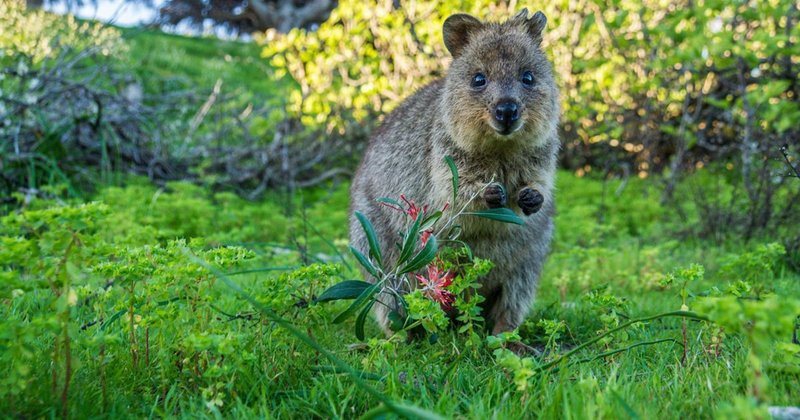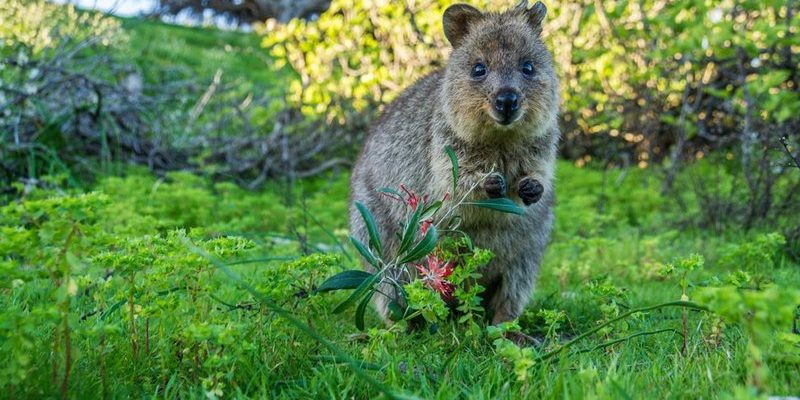
Despite their small size, quokkas have developed some impressive techniques that allow them to flourish where many other creatures would struggle. It’s kind of like watching a small business thrive in a tough economy. They may be small, but they pack a punch when it comes to resilience and cleverness! From their unique diets to their social behavior, quokkas have some clever tricks up their sleeves, ensuring they not only survive but also thrive. Let’s explore how these marsupials face the challenges of their environment.
Understanding Quokkas’ Habitat
Quokkas primarily inhabit Rottnest Island and some parts of the mainland in Australia. This habitat is characterized by a mix of coastal scrub, grasslands, and forests. The climate can be quite unpredictable, often bringing harsh summer heat and occasional droughts. These conditions can be tough for many animals, but quokkas seem to have mastered their environment.
One major factor that helps quokkas is their choice of residence. They prefer areas with plenty of ground cover, which offers them shelter from the scorching sun and potential predators. Think of it as living in a cozy treehouse instead of out in the open. This way, they can enjoy the shade during the hottest parts of the day, which helps them maintain their body temperature.
Moreover, quokkas are quite good at finding water sources. They can often obtain enough hydration from the vegetation they consume. So even when the sun beats down mercilessly, you might find a quokka nibbling on a succulent plant, quenching its thirst and filling its belly all at once. It’s a smart way to tackle a tough environment!
The Quokka Diet: What Keeps Them Going?
When it comes to survival, your diet plays a critical role—and quokkas know this well. They are mainly herbivores, munching on a variety of plants, leaves, and grasses. Some might think of them as picky eaters, but they’re actually quite adaptable. Think of them as the “farmers” of their habitat, selecting the best bits of foliage to sustain themselves.
Quokkas are particularly fond of native vegetation. During drought periods or when food is scarce, they can switch their diet to include tougher plants. This flexibility in eating habits allows them to utilize whatever resources are available, just like people making do with what’s left in the pantry. It’s all about being resourceful!
Moreover, quokkas have a unique way of processing food. They have a specialized digestive system that helps them extract maximum nutrition from their meals. This is crucial, especially in environments where food isn’t as plentiful. To put it simply, a quokka’s meal goes much further than you might expect!
Managing Water Loss: How They Stay Hydrated
Water is life, and quokkas understand this better than most. In their harsh island habitat, rainfall can be infrequent, leading to periods of water scarcity. So, how do quokkas deal with this challenge?
For starters, they can reduce their water loss significantly. Quokkas have adapted to conserve water through their urinary system, allowing them to produce highly concentrated urine. This means they can hold onto precious fluids longer than many other animals. Imagine squeezing every last drop from a sponge—this is how quokkas handle moisture!
Additionally, as mentioned before, they often consume plants with high water content. These plants act like nature’s water bottles, providing hydration without needing to trek far for a drink. This strategy is similar to how many desert-dwelling animals rely on succulent cacti to quench their thirst. Quokkas really know how to play the hand they’re dealt!
Social Behavior: The Power of Community
Believe it or not, quokkas are social creatures! They often live in small groups, which can be very helpful for survival. There’s strength in numbers, right? These groups provide safety in numbers and create opportunities for social interaction, which can boost their overall well-being.
When quokkas are together, they can watch out for predators more effectively. If one quokka spots a potential threat, it can signal to the others, allowing the group to take cover quickly. It’s like a game of “red light, green light,” where everyone keeps an eye out!
Socializing also helps quokkas find food. They often share information about good grazing spots within their group. So instead of wandering alone in search of a meal, they can work together to locate the best patches of greenery. This cooperation not only aids in survival but also enhances their joyful, playful behavior that we love so much.
Behavioral Adaptations to Extreme Conditions
Quokkas are experts at adapting to their surroundings, and this includes modifying their behaviors based on the changing environment. For example, during the hottest part of the day, they are usually more inactive. Instead of frolicking around and using up energy, quokkas tend to find cool, shady spots to rest. This behavior is a great example of how they conserve energy and minimize water loss.
Another fascinating adaptation is their nocturnal habits. Although they are often seen during the day, quokkas tend to be more active in the cooler evenings. By changing their active hours, they can avoid the scorching heat and reduce their risk of dehydration. It’s a clever way to beat the heat, much like how we might have a barbecue in the evening when the sun is lower.
Quokkas also have a unique way of coping with limited food sources. They can undergo periods of decreased activity when food is scarce, allowing them to survive on stored energy. This ability to slow down can be compared to hibernation in other species. It’s all about being resourceful and adapting to tough circumstances.
Conservation Efforts: Protecting Their Future
As charming and resilient as quokkas are, they face threats from predation and habitat loss. To ensure their survival, conservation efforts are actively underway. Organizations and local governments are stepping up to protect their habitats and manage predators that can disrupt their populations.
One major conservation strategy is habitat protection. By maintaining and restoring their natural environments, we can help quokkas thrive. This might include removing invasive species that compete for food or restoring areas that have been damaged by human activities. It’s similar to creating a safe neighborhood for your friends—you want to make sure they have a secure place to play.
Another critical aspect is raising public awareness. The more people know about these adorable marsupials, the more they may be motivated to help protect them. Educational programs and community outreach can foster a sense of responsibility towards quokkas and their habitats. It’s like joining a team dedicated to saving a beloved local treasure!
In conclusion, quokkas are fantastic survivors in their harsh environments, thanks to their unique adaptations and behaviors. From their clever feeding habits to their social structures, these little guys show us just how resilient nature can be. As we strive to protect them, we should appreciate the ways they thrive, reminding us that even the smallest creatures have important roles in our ecosystem. Let’s cheer for our happy little friends and work to secure their future!

